Telling Time in Extraordinary Fashion
TIME: the indefinite continued progress of existence and events in the past, present and future regarded as a whole, occurring in an irreversible succession within a nonspatial continuum.
Philosophers, religion and scientists have struggled to grasp this intangible concept ever since the beginning of it (and still don’t agree), so humankind invented a device to at least give time a face: the clock. The history of timekeeping devices dates back thousands of years and has been subject to several revolutions and innovations as well as fashion trends.
When it comes to this, Fred van Dreven is a true specialist. He has been in the antique business for many decades, an expert in the field of clocks and barometers, 18th and 19th century furniture and decorative yet functional objects. Take a look at some of the most extraordinary clocks in the collection:
Gothic Clock
This early 17th century wall clock was made from iron and has a polychrome painted dial. The clockwork uses a verge escapement, the earliest known type of mechanism designed to control the rate. It drives the foliot, a simple balance wheel with three weights that are adjustable on either end, causing it to oscillate back and forth. This particular device is an early example of a domestic clock, it dates back to 1607 and was made in South-Germany.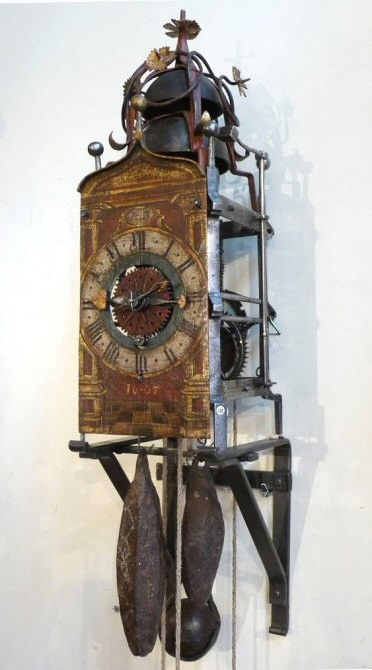
Gothic Clock, South-Germany, 1607.
Lantern Clock
Moving further into the 17th century and up to Great-Britain, where this fine winged lantern clock was made by a now famous fellow named 'Joseph Windmills of London'. Its mechanism is very similar compared to our previous example, yet its appearance is much more sophisticated. It has a wider chapter ring with Roman numerals, made of silver and engraved with foliage, runs for up to 30 hours and dates back to 1680-1700.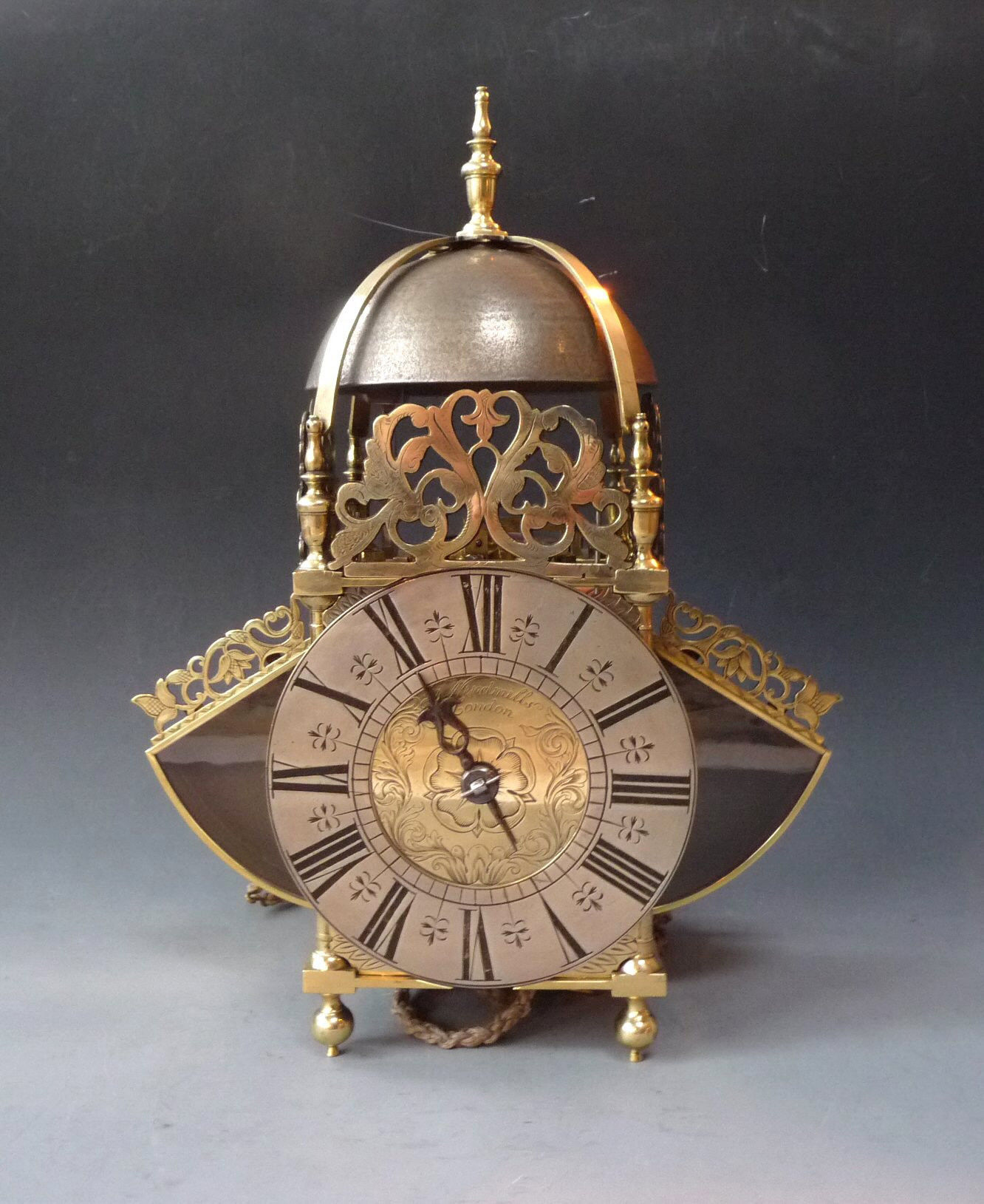
Lantern Clock, ca. 1680 - 1700, London.
Rack Clock
Almost 100 years later, during the reign of the last King of France, an unknown yet genius clockmaker crafted this rare and exceptional rack clock. It can be wound by pushing the clock upwards along the rack and lasts for up to 30 hours. The sheer intelligence of this mechanism remains hidden within a circular mahogany cabinet, covered by an enameled dial that displays Arabic numerals, extending into finely gilt bronze hands with ornaments. The rack is mounted on a white marble base.
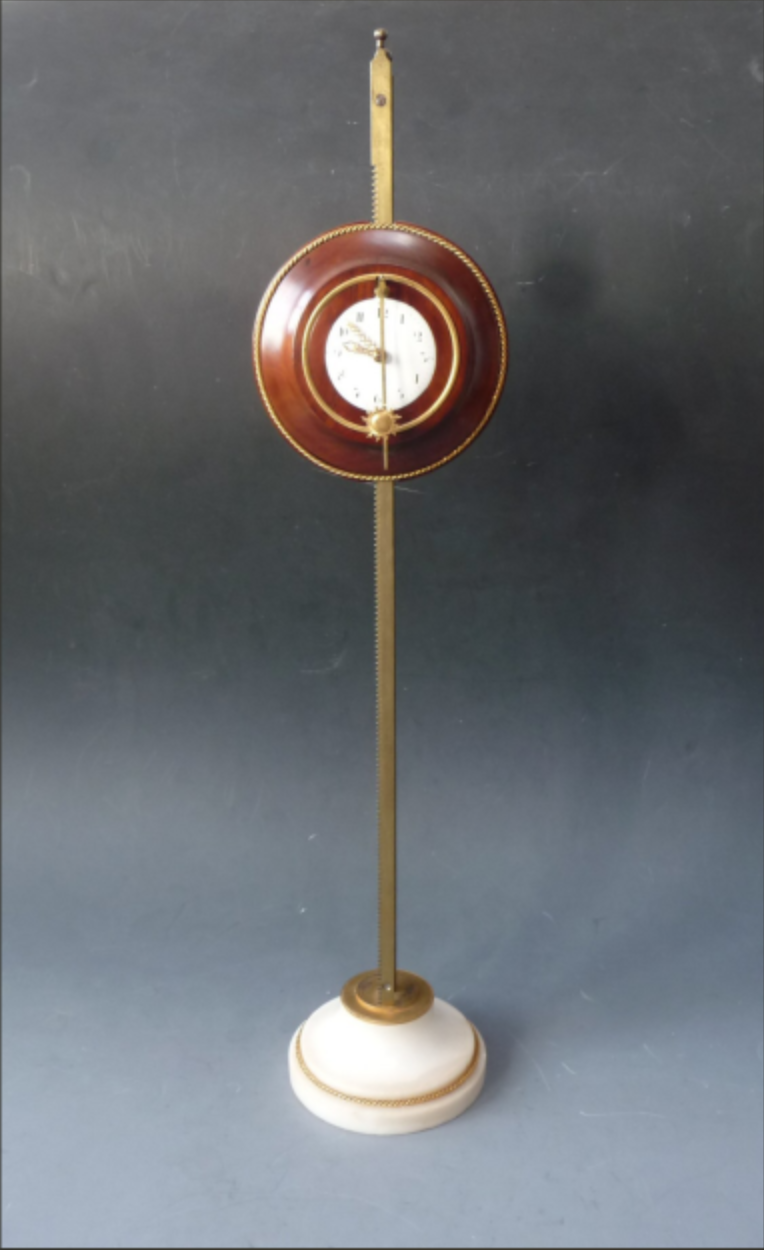

Rack Clock, Louis XVI ca. 1790, France.
Zappler Clock
Another lovely product of the art of clock making is this late 19th century Zappler clock. Traditionally speaking, Zappler clocks are small clocks that can only be looked at from one direction, to be placed on tables or cabinets. They originate from Austria and their cases are often made from cheaper materials such as metal or wood. The name refers to the sound that is made by the movement of the pendulum. This comic wooden mascot figurine bears the signature of 'Neuburger & Sohnen' à Paris on its white enamel dial and was made around 1880.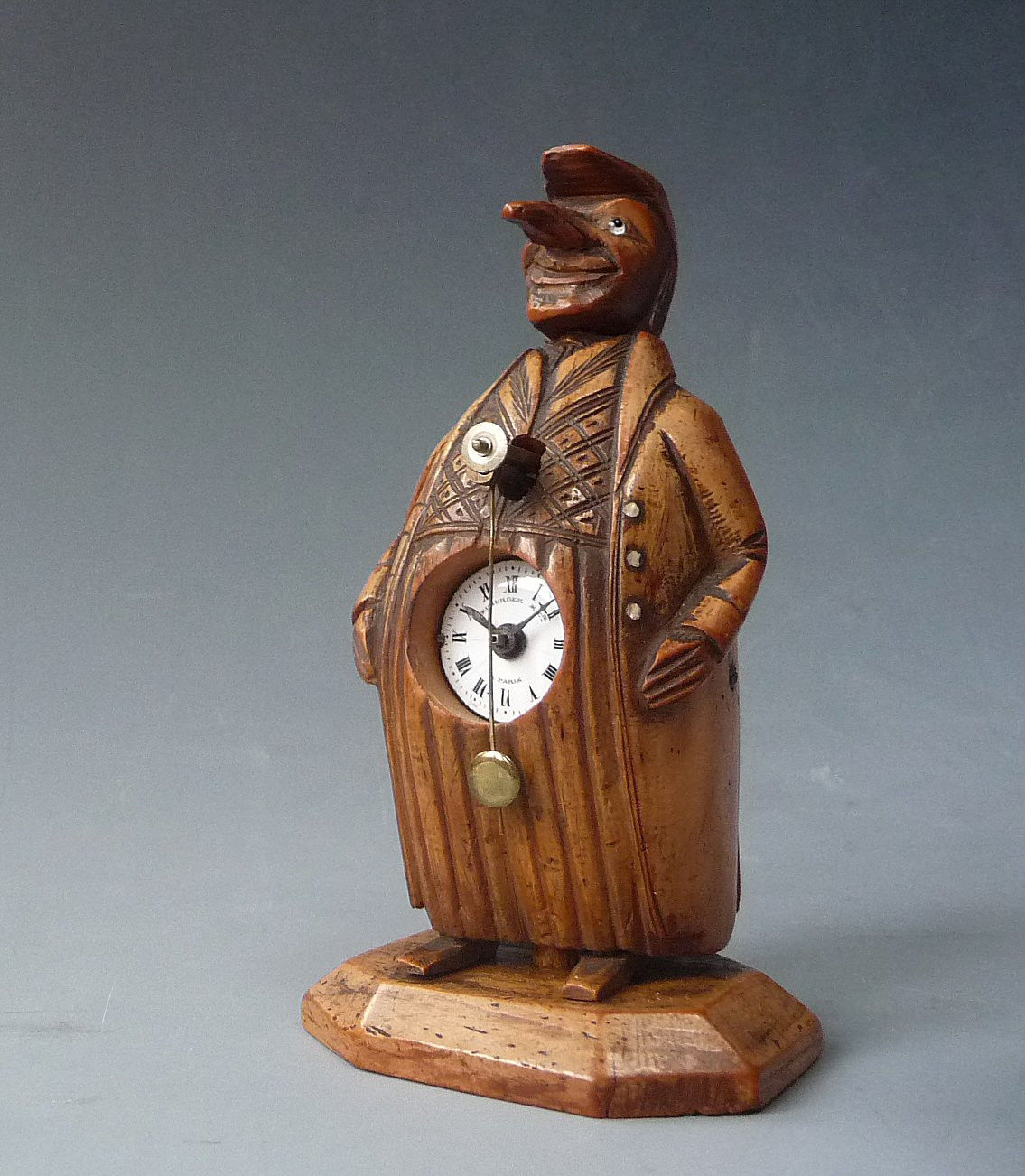
Zappler Clock, ca. 1880, Paris.
Atmos Clock
Last but not least, we present you this fine and rare Atmos clock, manufactured by the famous 'Jaeger-LeCoultre' of Switzerland. It is the brand name of a mechanical torsion pendulum clock, or a pendule perpétuelle as the Swiss would say, one that uses the force of a twisting spring instead of a swinging pendulum, meaning that it no longer needs to be wound manually. The case is made of rosewood and chrome, with the entire clock remaining in its original, mint condition since 1942.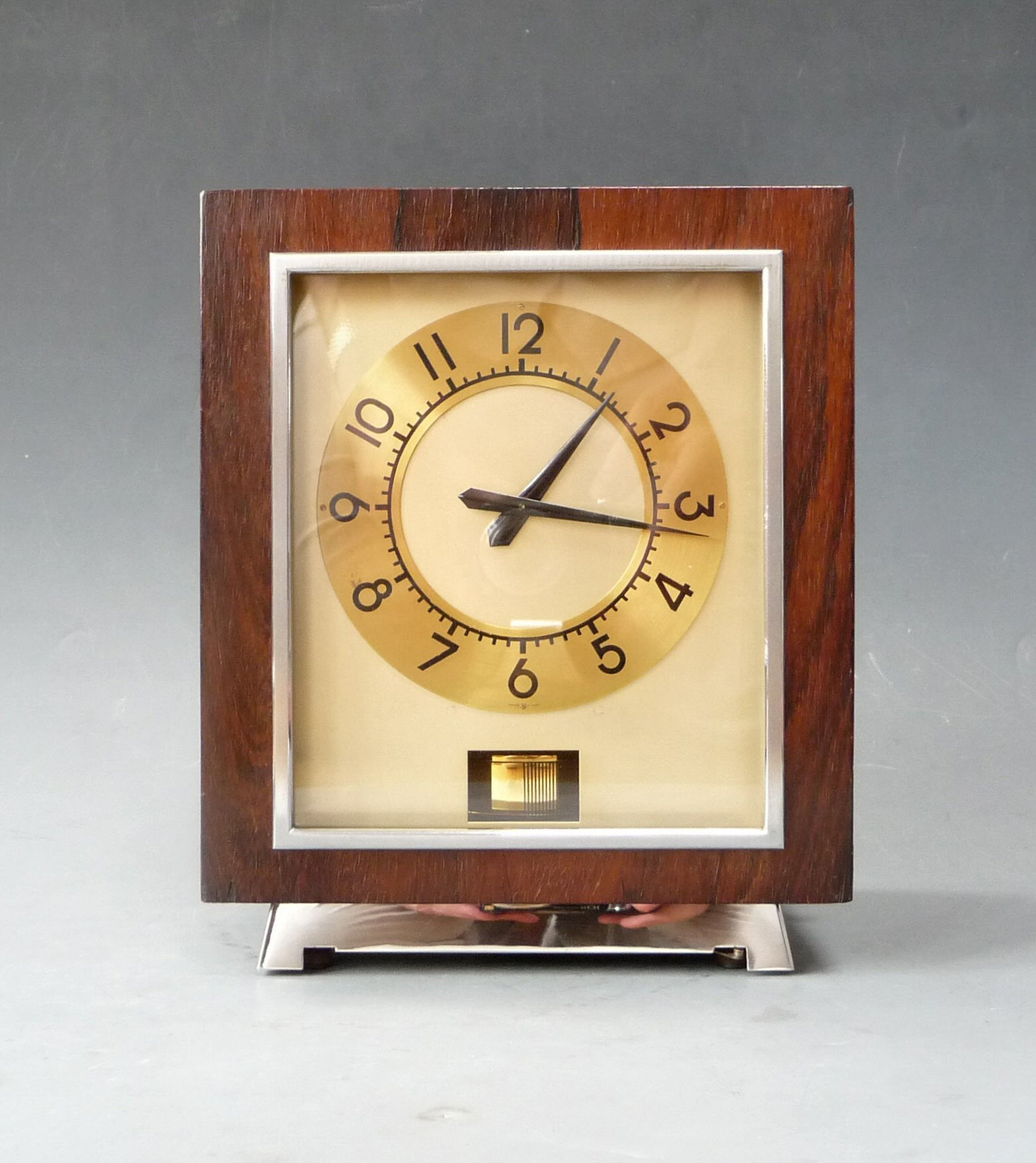
Atmos Clock, ca. 1924, Switzerland.
Interested in buying yourself some more time? Find more exquisite antique clocks here at Gallerease!


